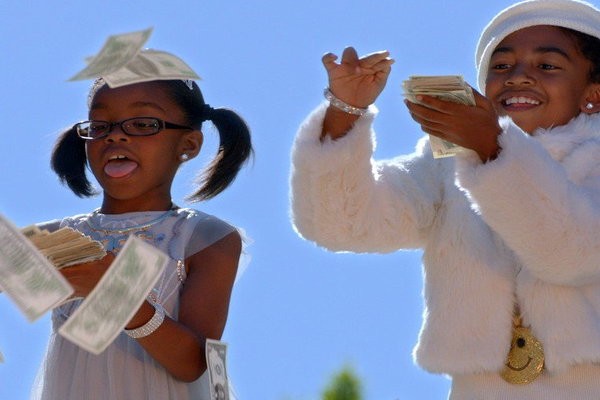The Life-Altering Decisions We Let 17-Year-Olds Make About Loans
by Hanna Brooks Olsen

We don’t, as a society, trust 17-year-olds with much.
They’re barely allowed to drive, they can’t vote, they can’t sign up for almost anything alone, and, in some states, they’re not even permitted to lie in a tanning bed and develop early stages of melanoma. We literally do not trust them with the skin they’re in.
We do, however, charge them with figuring out the rest of their lives, including saddling themselves, optimistically, blindly, with tens or even hundreds of thousands of dollars worth of debt.
I was 17 years old as I sat at my parent’s kitchen table in somewhat rural Oregon with a pile of FAFSA paperwork in front of my bewildered parents, neither of whom had gone to university, who were trying their best to help me muddle through it.
“Sallie Mae can take care of it,” my high school guidance counselor told me. “Or the bank. You’ll just get the loans you need and they you’ll pay them back. It’s not a big deal. Everyone does it.”
So I did it. In addition to the few small grants and scholarships I could cobble together, I also took on about $70,000 in debt from three separate lenders: The Federal Government, my parent’s bank, and a third party lender who helped close the gap at a ludicrously high interest rate.
The year was 2005. I was a teenager who wanted to be a teacher. The economy had not yet crashed. I was not being greedy, I wasn’t reaching beyond my means. I was trying to do the thing that everyone said I needed to do to not live right on the edge of poverty like my parents.
Now, I’m still kind of there.
I got a degree that got me an internship that got me a career. It also got me monthly payments that are about half my rent, which have kept me from buying a home, traveling, and, at times, eating or paying my heating bill.
There were months, when I had just graduated and was beginning to repay my loans, where I took shifts as a cocktail waitress for cash, where I sold plasma, where I interviewed to become a “dancer,” so to speak.
At that time, I didn’t have enough money to even make the kinds of payments that scratched the surface of the actual balance. Which only served to prolong the experience.
I’m 28 years old and have barely begun to come up for air. My degree lingers over me, each month, as I fork over about $600 in loan payments on top of my other expenses. My debt is a ghost, a specter. One that I welcomed into my life at 17 years old because who, at 17 years old, knows what debt really looks like?
By the time I will have paid off my loans, at the rate I’m going, I’ll have paid nearly twice as much as the value of my degree, due to interest and the fact that I didn’t have the money right at the beginning.
This is how we keep young people stuck. This is how we keep poor people poor.
The Hindsight Patrol loves to jump on me when I write essays like this.
“Whose fault is that? You could have gone to community college,” I’ve been told. “You could have taken out less. You could have lived at home.”
I couldn’t have, actually. Staying at my childhood home wasn’t an option. Not everyone has the luxury to be a boomerang kid.
Staying in my home city and state wasn’t an option because, when you live in a rural area, there are no jobs, no chances.
Taking out any less than I did wasn’t an option; my loans covered tuition, just barely, and my nights spent as a diner waitress covered everything else about my life.
But whose fault is it, I wonder? My 17-year-old self? The adults around me who could never have predicted the burst of a bubble I had nothing to do with?
We trust 17-year-olds with so little. They can’t drink, they can’t smoke. We protect them from behaviors that could come with consequences they couldn’t possibly understand. And yet we heap the pressure of huge financial choices on their tiny, freckled underage shoulders. And then we wonder how they could have gotten themselves into this mess.
Hanna Brooks Olsen is a freelance writer living in Seattle. She writes and reports on politics, feminism, poverty, and other interesting subjects. Her work has appeared on the Atlantic, NPR, the Huffington Post, and a few other publications.
Support The Billfold
The Billfold continues to exist thanks to support from our readers. Help us continue to do our work by making a monthly pledge on Patreon or a one-time-only contribution through PayPal.
Comments